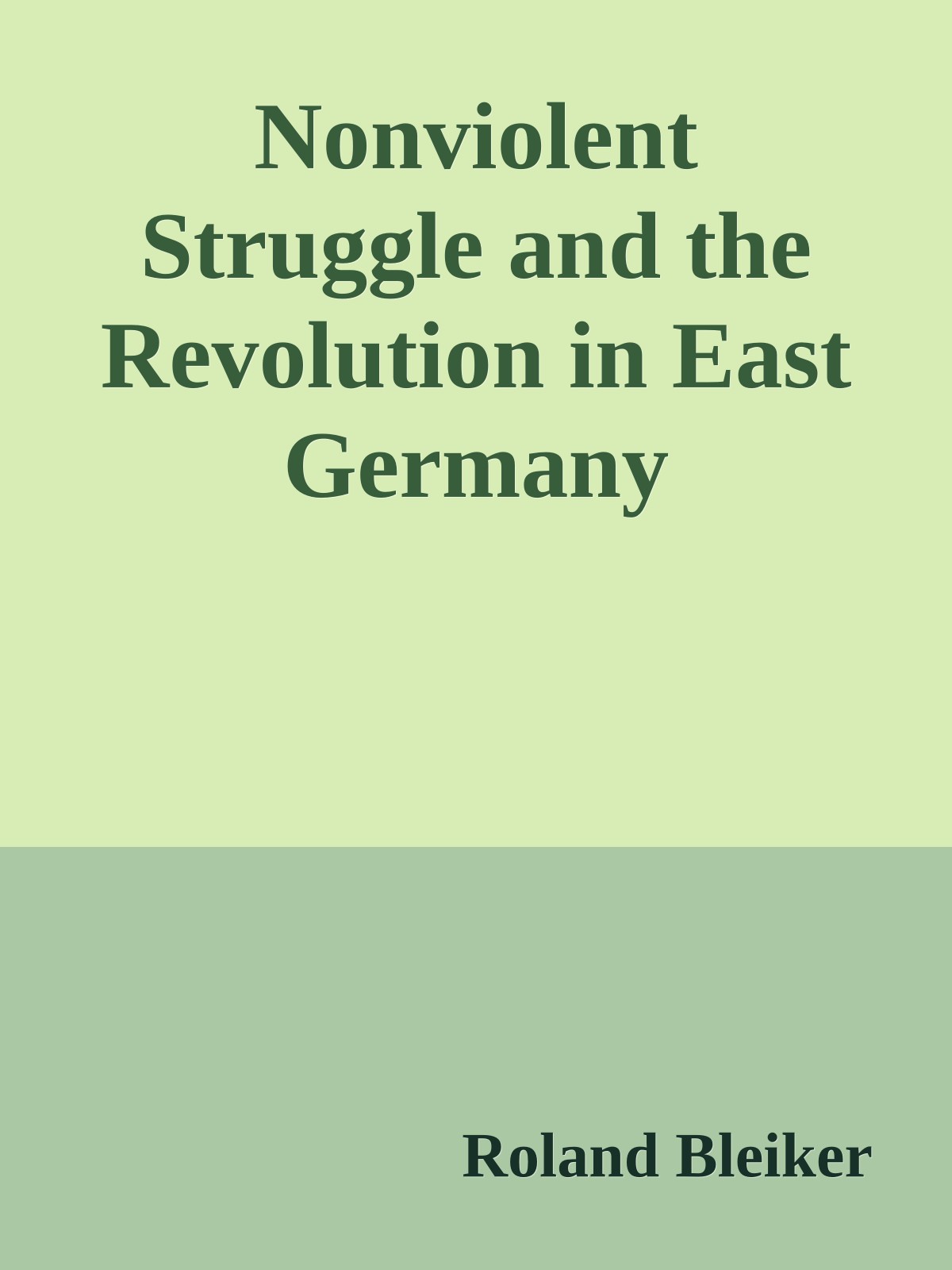Roland Bleiker
Nonviolent Struggle and the Revolution in East Germany (1993)

INTRODUCTION
We were more afraid of the people than the people had reason to be afraid of us.
(Statement by a member of the much feared Stasi, the East German State Security Service)
"We are the people" was the main battle cry of the nonviolent struggle that swept away the East German Communist regime in 1989. "We are the people," echoing hundreds of thousands of times through the streets of East Berlin, Dresden, Leipzig, and Karl-Marx-Stadt, came to symbolize the protest of the people against an alienated government and the power of these unarmed masses to overthrow their tyrannical rulers.
The East German revolution is more than a watershed event in European history. The crumbling of the authoritarian regime also contains seminal instructive value, since it can provide us with insight into the nature of power as well as the potential and limits of nonviolent struggle. This monograph examines the events in East Germany with this particular interest in mind.
Many causal aspects, preconditions, and contextual influences were responsible for the specific course of evolution in East Germany. Yet, two factors must be singled out as having played a key role in causing the downfall of the oppressive regime, namely large-scale popular demonstrationsand massive waves of East German citizens leaving illegally for the West. These so-called "voice" and "exit" forms of protest are classic examples of nonviolent direct action and were mentioned explicitly as such in Gene Sharp's influential 1973 study of the subject.
The stunning impact of these two methods of nonviolent action can be understood better with the help of a parsimonious insight about the nature of power, first proposed almost half a millennium ago by Etienne de la Boetie. As a young student at the University of Orleans, he hypothesized that any form of government, no matter how despotic and violent its nature, is always dependent upon the tacit consent of the population. De la Boetie further argued that since this consent rests upon voluntary grounds, it can be withdrawn at any time, which subsequently would lead to a disintegration of the existing authoritarian societal structure.
The events in East Germany confirm certain elements of this bold premise. The impact of "voice" and "exit" forms of protest illustrate that (1)an authoritarian regime cannot generate and maintain its own power base through coercive means alone, and that (2) because this power base is also dependent upon popular support, the population can, through active withdrawal of cooperation, undermine the sustenance of the existing repressive system.
However, an analysis of the German revolution that stops at an affirmation of the power contained in nonviolent struggle remains incomplete. The events in East Germany are too complex to be assessed entirely through a theory of power that locates social dynamics on a dualistic axis between oppressor and oppressed. The fall of the Communist regime warrants an idiosyncratic analysis of the complex power relationships and structural influences that allowed nonviolent direct action to show its might. Needless to say, this monograph cannot do justice to such a complex task. I will only draw attention to two of these crucial contextual factors, namely the evolution of internationally, intranationally, and domestically conditioned restraints on popular resistance as well as the extent to which the efficacy of a nonviolent struggle is dependent upon the interaction between the state and civil society.
This monograph is divided into three sections. The first section provides a brief chronological overview of resistance and revolution in East Germany. The second section examines the role that "exit" and "voice" forms of protest played in the collapse of the Communist regime and then derives from this analysis a few theoretical implications for the dynamics of nonviolent struggle. The third section places the East German nonviolent struggle in the societal context that allowed it to emerge in its particular form and exert the power-devolving effect that de la Boetie and others credit it with. A concluding section draws on this case study to present a few tentative theoretical and methodological suggestions for the future study of nonviolent direct action.
Downloads and Links
- Download Nonviolent Struggle and the Revolution in East Germany (1993) by Roland Bleiker - PDF (2.0 MB) - 61 pages.
- Originally downloaded from the Albert Einstein Institute free-books section, with the PDF metadata now corrected.
- Read Nonviolent Struggle and the Revolution in East Germany by Roland Bleiker on The Internet Archive and download in different formats
- Web search for the book by ISBN:9781880813072
- Web search for the book by author and title
